











Why is it Important to Work with a Licensed Real Estate Agent and a Long Standing Real Estate Company?





Buying Real Estate? The Basics
What our Reasons Why Love Living Here?
How Do People Enjoy Life Here? CLICK OR
What are our 99 Reasons Why We Living Here?
Are Real Estate Agents Licensed in Costa Rica?



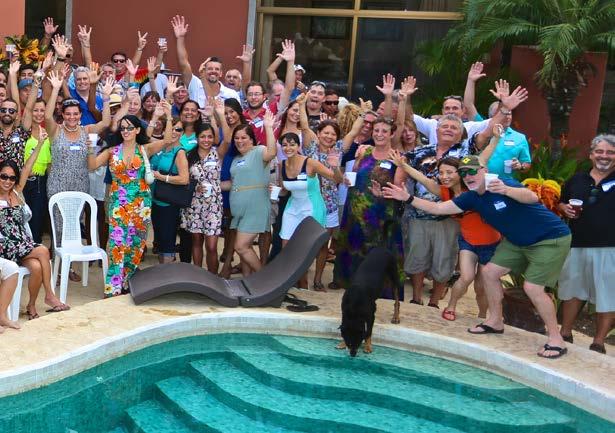

CLICK YOUR QUESTION OR HERE FOR MORE SOLUTIONS:


Spanish 84,054 German 60,935
Italian 46,949 Portuguese 37,628
Hebrew 36,135 French 1,033
Enjoy the fun interactive activities of word search and online puzzles.

See the bottom of the page in the link.

We are lucky to live in Costa Rica, one of the most biologically diverse countries in the world, with rainforests, cloud forests and mangrove swamps, as well as 12 different climate zones. Costa Rica makes up just 0.03% of the earth's surface; it's home to more than 5% of the planet's species. This staggering level of biodiversity is due in part to the country's location and topography, as well as its strong conservation efforts.
Costa Rica is home to over 500,000 plant and animal species, including jaguars, monkeys, toucans, sloths, and sea turtles, among others. Its ecosystems range from dry tropical forests to mangroves to high-altitude cloud forests. The country also has a particularly high level of endemism, with many unique species found nowhere else in the world.
We need to cherish what we have and work together to make more places on our planet healthier.
Biodiversity, a term that refers to the variety of living organisms on earth, is one of the most important aspects of our planet. It is essential to our survival, providing us with many of our most basic needs, such as air to breathe, water to drink and food to eat. Protecting biodiversity is more than just an environmental issue; it is a fundamental human responsibility.
Unfortunately, over the past century, human activity has caused the most severe decline in biodiversity in human history. The loss of biodiversity is not only a tragedy in itself but also has far-reaching ecological and economic implications. Therefore, it is crucial that we take action to keep the world's biodiversity.
by John Quam
One of the most important ways to preserve biodiversity is to protect habitats. Habitats are the natural environments in which different species of plants and animals live, and they are essential for the survival of those species. Unfortunately, many of these habitats are threatened with destruction due to activities such as deforestation, urbanization, industrialization and farming. Therefore, it is critical that we take steps to protect these habitats. This may involve setting aside areas of wilderness or rewilding areas that have been damaged by human activities. It may also include strict regulations on land use and development.
Another essential step to protect biodiversity is to prevent the introduction of invasive species. Invasive species are non-native species that have been introduced to a new environment and can cause significant harm to the local biodiversity. Invasive species can outcompete or even prey on native species, causing population declines or even extinction. Therefore, it is necessary to control the movement of non-native species, ideally by preventing their introduction in the first place. It is also important to have systems in place to quickly detect and respond to the presence of invasive species.
Reducing pollution is another key step to preserving biodiversity. Pollution can have a severe impact on ecosystems and the species that depend on them. For example, some species of fish and other aquatic creatures are highly sensitive to pollution and can suffer heavily when exposed to toxic chemicals. Furthermore, air pollution can impact pollinators like bees and butterflies, crucial for the propagation of plant species. Therefore, we must take steps to reduce pollution, including by regulating industries and encouraging the use of cleaner technologies.
urbanization,

Climate change is also a significant threat to biodiversity. As the planet warms, different ecosystems may no longer be viable, and species may be unable to adjust quickly enough to survive. Therefore, taking steps to address climate change is an essential part of preserving biodiversity. This may include reducing our use of fossil fuels, increasing our use of renewable energy and adapting to changing climatic conditions.
Finally, we must work to raise awareness about the importance of biodiversity. Too often, biodiversity is viewed as a luxury that we can afford to lose. In reality, it is essential to our survival and well-being. Therefore, it is critical to educate people about the value of biodiversity and the risks of neglecting it. This may involve teaching people about the ecological and economic benefits of biodiversity or encouraging them to take action to protect it, such as by supporting conservation organizations or reducing their own environmental impact.
In our area, conservation has been at the forefront. Costa Rica implemented important policies in the 1970s and was one of the first in the world to incorporate the concept of sustainable development into its national plans.
Many of the country's forests are protected areas, and there are strict laws in place to prevent deforestation and protect wildlife. In addition, ecotourism has become a major industry in the country, providing incentives for locals to keep their natural resources intact.
Challenges remain, however, including habitat destruction and climate change. Nevertheless, through its diversity of species and strong conservation mindset, Costa Rica serves as a model

for other countries seeking to protect their natural heritage.
Respecting and being real stewards of the environment goes a long way in correcting environmental issues. With the influx of people moving here to enjoy what Costa Rica offers, there have been many impacts on the regional microenvironment. I have heard many say it’s just progress. Well, progress comes in many forms, and progress can be detrimental.
Protecting our earth is the job of each and everyone of us. Take the initiative and do something in your world. Every little bit helps.

John B. Quam
Protecting biodiversity is more than just an environmental issue; it is a fundamental human responsibility.
EEco-conservation has long taken a high profile in Howler stories stressing the crucial need to protect Costa Rica’s precious natural resources and wildlife habitats. Our July cover story shifts the focus from these modern environmental concerns to the valuable human ecology lessons we can learn from the descendants of those living here millennia ago. The displacement of Costa Rica’s indigenous tribes has been the unfortunate consequence of discrimination, land grabs and exploitation due to expanding tourism, mining and agricultural activities. We invite readers this month to consider the importance of protecting the rights and interests of these vulnerable populations to preserve their traditional ways of life and secure their future.
In the same issue, you’ll find tips for jungle hiking and planning the perfect surfing vacation. We also talk about termites and cacti in Costa Rica, dressing for the season, and simple recipes to enjoy readily available tuna and papaya. We also bring you good news from Iceland about successful efforts to stop illegal whaling.
John Brockmeier. Writer and activist inspired by diverse interests and international life experiences.
Terry Carlile. Served as a U.S. Navy journalist for eight years, and is also a workshop trainer and keynote speaker.
Alejandro Luis Esquivel. Spanish historian and advocate for the indigenous cultures of the Americas.
Ivan Granados. Managing Partner at GM Attorneys, specializing in real estate and corporate law. igranados@gmattorneyscr.com
Karl Kahler. Author of "Frommer's Costa Rica 2017," former travel editor of the Tico Times and former national editor of California's San Jose Mercury News.
John Quam. Howler Magazine Owner, Publisher and Editor-in-Chief, who has called Costa Rica home for nine years.


Patricia Sterman. Argentinian fashion design graduate, living in Costa Rica for more than 20 years. Owner of Azul Profundo Boutique, jewelry manufacturer and co-founder of SalveMonos animal protection group.
Audrey Vargas Gil. Originally from Cali, Colombia, and now a citizen of Costa Rica, living in the Tamarindo area for over 20 years. She started Ordry's Spa in Tamarindo 16 years ago and has many local and tourist clients.
Captain Paul Watson. Globally renowned ocean conservationist and environmental activist, advancing marine ecosystem protection initiatives through the new Captain Paul Watson Foundation. Co-founder of the Greenpeace Foundation and founder of the Sea Shepherd Conservation Society.
COVER PHOTO: courtesy of Fotos Antiguas de Costa Rica. Antonio Saldaña was the last cacique (chief) of Talamanca in Costa Rica. His tenure spanned 30 years, from 1880 to 1910, when he died under unclear circumstances.
Fred Lipsky. Retired New York police officer, now enjoying kayak fishing and nature photography adventures in Costa Rica.
• Bookstore of the Waves
• Force One Security
• GM Attorney
• Hidden Garden Art Gallery
• Horizon Pacific Rental Property
• Grupo Tropigala S.A.
• Liberty Express
• Mar Vista
• Odry's Massage
• Tres Amigos Realty Group
PUBLISHER / EDITOR-in-CHIEF
John B. Quam
executive director - Terry Carlile
account executive
Mary Fernández
Editorial Staff
Debbie Bride - Editorial Coordinator
Laurie Quam - Copy Editor
HOWLER (™) 2017
Cont act
John Quam - Managing Partner headmonkey@howlermag.com
Editor: editor@howlermag.com
Advertising: terry@howlermag.com
Design: design@howlermag.com
CR Office: (506) 4701-5942
Howler Magazine Costa Rica @howlercostarica @thehowlermag @howlermagazine
The Howler Gold Coast CR S.A.
Ced. Juridica: 3-101-725213
The opinions, beliefs and viewpoints expressed by the various authors in this publication do not necessarily reflect the opinions, beliefs and viewpoints of Howler organization or its advertisers.
All rights reserved. No part of this publication may be reproduced, distributed, or transmitted in any form or by any means, including photocopying, recording, or other electronic or mechanical methods, without the prior written permission of the publisher, except in the case of brief quotations embodied in critical reviews and certain other noncommercial uses permitted by copyright law. For permission requests write to: info@howlermag.com.
The Howler Magazine does not assume responsibility for the content of its advertisements.
Images not credited are acquired from stock photography services.
Copyright © 2023
The Howler Gold Coast CR S.A
Copyright © 2023 Howler Media Holding, Inc. Panama


The Howler Gold Coast CR S.A.
Ced. Juridica: 3-101-725213
HOWLER (TM)2021
Click on the section to go directly to those pages.
UP FRONT:
• The Survival of Costa Rica's Indigenous Tribes
• Protecting the Indigenous Tribes of Costa Rica
Editorial: Don't Leave Conservation Up to Someone Else
TRAVEL & ADVENTURE
• Jungle Hiking Tips

• Planning Your Vacation Early
• Catching up with Gyrocopter Girl
• A Sticky Subject
• Termites Right at Home in Costa Rica
• The Sulphur-Winged Parakeet
PURA VIDA
• Another Flat Tire?
• Swedish Massage: the Start of Feeling Wonderful
• Simply Spanish: Looking for Adventure
• Victory for the Whales in Iceland
FOOD/DINING
• The Magical Mojito
• Hundreds of Cans of Tuna and Many Food Options
• Papaya Popular in Costa Rica
• The Health Benefits of Coffee
• The Health Risks of Coffee
ARTS, CULTURE & ENTERTAINMENT
• Up Front: Indigenous Tribes
• Musician: Sebastian Kaya Salgueiro
CR SURF
• Tide Chart, Sun, Moon Schedule
• Sam Reidy and Coral Wiggins
Win Open in the O'Neill Cup
• A Surfing Vacation in Costa Rica
• Dressing for the Dampness
• Planning Your Holiday Trip Fashion
• Featured Designer: Almara
• Horizon Pacific
• Sun Real Estate
• Grupo Tropical
• Tres Amigos
• Cybersecurity Needs in Costa Rica
• Costa Rica Luxury Real Estate During and and After the Pandemic
• Marketing with Howler



Despite the fact that Costa Rica is an incredibly diverse nation, like in many parts of the world, indigenous communities are at risk of losing their cultural identities due to colonization, urbanization, and globalization. Therefore, it is crucial to know, understand and recognize these indigenous tribes, acknowledging their remarkable survival while committed to keeping their heritage alive for future generations.
Photo: Talamanca Bribri women in 1912 pages courtesy of Fotografias antiguasA global concern
Indigenous people everywhere are a world treasure. We need to learn from their cultures and embrace their historical value.
Protecting indigenous tribes is essential due to their unique communities and vital components of cultural diversity. Despite being overlooked and discriminated against throughout history, indigenous tribes possess rich cultures, traditions, and experiences that are unparalleled.
Developed over many centuries, their language, beliefs, arts and customs are remarkable and valuable to the history and cultural heritage of humanity.
Unfortunately, indigenous people have been subject to marginalization, oppression and violence throughout history, leading to many tribes being endangered. Therefore, protecting all indigenous tribes and their cultures is critical to ensure that their voices are heard, their traditions are recognized, and their future is secure

In recent years many governments around the world have passed laws to protect their indigenous people. This is the case in Costa Rica, which is home to eight distinct indigenous groups who contribute to the country’s rich cultural diversity.
These indigenous tribes have always been an essential part of Costa Rican society and are recognized for their customs, traditions, language, and heritage. Below is an overview of these national treasures.
The Cabécar, also known as “the mountain people,” belong to one of the most recognized indigenous communities in Costa Rica, located in the south-central region of the country. The Cabécar are known for their traditional practices in agriculture, herbal medicine, and spirituality, which are still vital today. Although they are recognized as the largest indigenous tribe, the Cabécar people have also faced discrimination, mistreatment and marginalization from society, and have fought for their rights in the past.
The Huetars are known for their intricate stone carvings and sculptures. According to historical accounts, they were skilled in agriculture and had a complex social hierarchy. Despite their advanced culture, the Huetars were eventually conquered by Spanish colonizers in the 16th century. Today, their legacy lives on through their art and the few remaining descendants of this once-great civilization.
The Bribris are officially recognized as the oldest group of indigenous people in Costa Rica. They live in the Talamanca region, in the mountains and Caribbean coastal areas of Costa Rica and northern Panama.

The Bribris are known for their traditional medicine practices, which involve using natural resources from the rainforest to heal ailments. They are also renowned for their handicrafts, including making masks used for their traditional dances and lifestyle.
They believe that the earth and nature provide everything that they need, and as such, they consider the environment to be a central part of their spirituality and religion.
Challenges faced by the Bribris include deforestation, loss of land and encroachment of modern civilization on their way of life.
Click here for more:
• Borucas
• Maleku
• Chorotegas
• Teribas
• Guaymis
→ Survival is critically important
→ What can we learn from these groups?
Indigenous communities are at risk of losing their cultural identities due to colonization, urbanization, and globalization.Malekus 1890-1900 Photo by Fotografias Antiguas Indígenas de Costa Rica


Indigenous Malekus or Guatusos, Alajuela, 1892

 Photo and caption: Fotografías antiguas
Photo and caption: Fotografías antiguas
Navas Villanueva family. Teribes Indigenous.

Manuel Navas in front, first from right to left, Grandfather of Keylor Navas, the famous Costa Rican soccer player.

1930
Photo and caption: Fotografías antiguas





 Pablo Bejarono, Ngobe indigenous leader.
1970
Photo and caption: Fotografías antiguas
Pablo Bejarono, Ngobe indigenous leader.
1970
Photo and caption: Fotografías antiguas
Cabécar Indians grinding corn to make chicha.




Cabécar house, Ujarrás Puntarenas, Costa Rica.

date unknown

Maleku indigenous woman.


1977
 Photo and caption: Fotografías antiguas
Photo and caption: Fotografías antiguas
The cacique de la Casona, Don Pedro Bejarano, with his mother, Joseba, in the Ngöbe indigenous territory in Coto Brus.

1960s
Photo and caption: Fotografías antiguas





Si pero es complicado


 by Alejandro Luis Esquivel
by Alejandro Luis Esquivel
Costa Rica's indigenous tribes have inhabited the country for centuries. The government of Costa Rica has committed itself to the protection of these tribes in order to ensure their survival and preserve their traditional way of life. However, indigenous tribes in Costa Rica have faced significant challenges in recent times, including discrimination, land grabbing and exploitation. It is imperative that the government takes proactive measures to protect the rights and interests of these vulnerable populations.
One of the main challenges facing indigenous people in Costa Rica is the loss of their land and natural resources. Many indigenous communities rely on their ancestral lands for subsistence farming, hunting and fishing. However, the rapid expansion of tourism, mining and agricultural activities has led to the encroachment of these lands, often leading to the displacement of these tribes.
To protect their rights, the government of Costa Rica has set up a national park system and reserves, which have been instrumental in preserving the rich biodiversity of the country. Additionally, there have been several successful community-based conservation projects that have helped local communities gain ownership of their land and natural resources.
Another major challenge faced by indigenous tribes in Costa Rica is the threat of violence, particularly against women and children. Reports suggest that acts of violence against indigenous women and girls are often perpetrated with impunity, leading to a growing concern around the issue. In response, several human rights organizations have been working towards raising awareness around these issues and advocating for policy changes to protect indigenous women and children.
Several grassroots organizations have also been established to empower local communities and provide them with the tools and resources they need to protect themselves and their families.
Finally, education has become an important tool for promoting awareness and understanding of indigenous cultures and traditions in Costa Rica.
The government of Costa Rica has been implementing policies to ensure that indigenous children have access to quality education that takes into account their cultural and linguistic diversity. Furthermore, initiatives such as bilingual education programs, cultural exchange programs and intercultural education have helped to foster mutual respect and understanding between indigenous and non-indigenous communities.
Many indigenous communities rely on their ancestral lands for subsistence farming, hunting and fishing.

Photo courtesy of www.twoweeksincostarica.com
Protecting the indigenous tribes of Costa Rica is a complex process that requires a concerted effort from the government, civil society and indigenous communities themselves. It is crucial that the government takes proactive measures to protect the rights and interests of indigenous peoples and ensure their survival. This includes safeguarding their lands, improving access to justice, addressing gender-based violence, and promoting education and cultural exchange. By working together, we can create a future where indigenous peoples can thrive, and their traditional way of life can be preserved for generations to come.
Maleku tribe living in an area called Guatuso.


Costa Rica is a tropical country with a unique climate. It has two main seasons, the dry season and the rainy season. In the rainy season, there's an increased amount of humidity, which can be difficult to deal with, especially when it comes to clothing. Dressing for humid and rainy weather can be challenging, but there are a few tips that can make the experience more bearable.
Firstly, it's important to wear lightweight and breathable clothing. Choosing clothing made from cotton or linen is a great option for humid weather as it will keep you cool and allow your skin to breathe. It's also a good idea to wear loose-fitting clothing as it will allow for airflow and prevent excessive sweating.
Secondly, it's important to bring rain gear when traveling to Costa Rica during the rainy season. It's best to bring a rain jacket and an umbrella, as both will come in handy during those
by Howler Staffsudden rain showers. A rain jacket and an umbrella will ensure that you stay dry during rain showers while not causing discomfort due to sweating.

Thirdly, it's essential to wear appropriate footwear. When it's humid outside, your feet are likely to sweat and cause blisters if you wear shoes that don't allow for air circulation. Choose comfortable shoes that are easy to dry and allow for adequate circulation. Flip-flops, sandals or shoes made of breathable material are the best choices.
Dressing for humid and rainy weather in Costa Rica requires some consideration and preparation. Wearing lightweight and breathable clothing, bringing rain gear, and having appropriate footwear will help you cope with the weather conditions. With these tips, you can enjoy a comfortable and enjoyable trip to Costa Rica, no matter the weather.
Choose comfortable shoes that are easy to dry and allow for adequate circulation.


It’s holiday season! Here you are on the beautiful Pacific coast of Costa Rica and parties are happening everywhere.
Consider this major factor: Living under a heat-wave alert” means incredibly hot weather will make you — trust me — sweat profusely. Be conscious of that in your choice of beach party attire so you can dance all night with no worries. Stay cool while looking hot. So, my strongest advice is to go with airy, soft, flowing dresses because … who wants to be in the family picture with sweaty armpits?
Most parties at the beach have a common dress code: WHITE. So either bring your own favorite lightweight white garment or enjoy a fun afternoon shopping for the one piece that was meant for you. Remember, an all-white look keeps it simple, yet chic. If you prefer to make a more personal fashion statement, I suggest you go bright, floral or tropical. The clue is to look and feel cool, inside and out.
Another important tip is to leave your high heels at home. On the beach they can become a safety hazard. If you must wear heels — at your own risk — definitely be prepared for the
shoe-changing nice pair of open-toe platforms in when needed.
Last but not that makeup weather, so keep please avoid the humidity will shiny and sweaty-looking have too much skin.
shoe-changing act, by tucking a open-toe sandals or your purse to grab needed.
not least, remember easily melts in hot keep it light. Also, the shimmer; the will make you extra sweaty-looking if you much sparkle on your for more...




Inspired by the and its free the essence of our beauty, the power of us the brand and them with us. handcrafted with fine








CLICK HERE TO JOIN

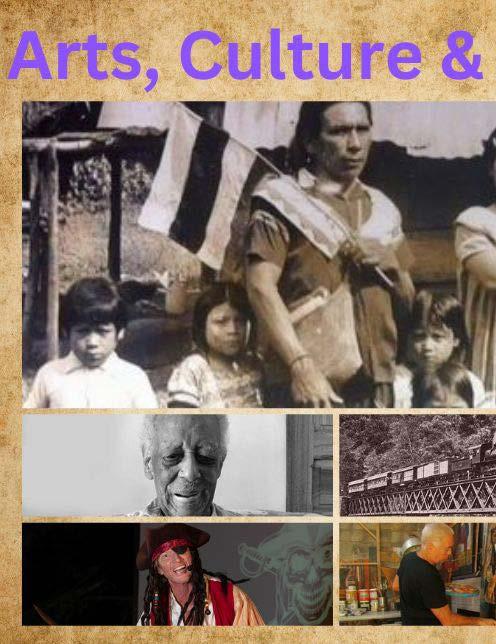

Sebastian Kaya Salgueiro is a reggae musician from Uruguay, who has been living in Costa Rica for 10 years. After catching one of his recent performances in Tamarindo, we reached out to him with an invitation to tell Howler readers about his background and favorite activities.

“I believe that music is the medicine of the soul, and reggae is a charged musical style of love,” he shared. “People enjoy my music because I try to transmit positivity and respect.”
Along with an album called “Wise Moments,” Sebastian has many original songs to credit, including the popular “Let Me Show You.” Dedicated to Costa Rica, it’s been played and recorded with several of his favorite musicians from Tamarindo.

“I love this blessed land and its people,” he affirmed, “and that's why I decided to stay here.”
As a tribute to reggae, Sebatian enjoys performing songs by artists such as Bob Marley, Peter Tosh, Alfa Blondi and Culture.
“But what I like the most,” he told us, “is to sing my original songs and see that people like them and hire me for my songs. I think that is the most important thing for an artist — to create!”
by Terry Carlile


“I love this blessed land and its people.”Sebastian Kaya Salgueiro Sebastian Kaya on Facebook Instagram



Each month we've been highlighting one of Fred's amazing bird photographs. Click lower right for more information.
The Sulphur-Winged Parakeet (Pyrrhura hoffmanni)
• Also known as Hoffman’s conure or the sulfur-winged parakeet
• Endemic to the highlands of southern Costa Rica and western Panama, preferring a habitat of mountain forests and open woodland up to 3,000 meters but sometimes descending to 1,300 meters in the wet season

• Medium-sized parrots, mainly green, orange-scaled on the head and chest, with a red nape spot and dull red tail

• Recognized in flight by the extensive yellow on the inner wing
• Feed in flocks of 5-15 birds at treetop level, taking various seeds and fruits including figs
• In breeding seasons, hens lay on average three white eggs in an unlined nest cavity 8-20 meters high in a tree — possibly an old woodpecker hole or a broken stub
• Both male and female incubate the eggs for about 23 days
Source: Beauty of Birds
This guy is an uncommon bird and is found at about 8,000 feet elevation. It was photographed in December 2022 in the mountains south of Cartago, Costa Rica.
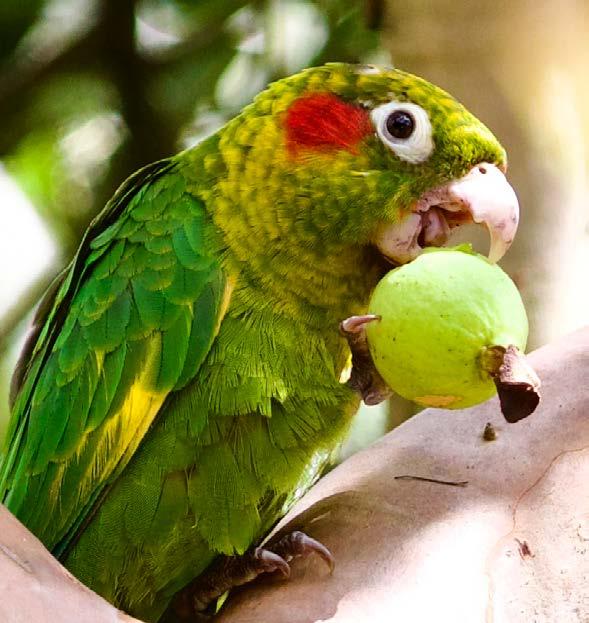

Story and photos by Terry Carlile
Several hundred varieties of cactus can be grown here.

During the dry season in Costa Rica’s northwest region near the Pacific coast, there's one thing that remains green in the brown and droughtridden hillsides: cacti.

Usually, when you think of the tropics or Central America, cacti probably aren't on your top list of vegetation to discover. Although cacti are not native to Costa Rica, several hundred varieties can be grown here.
Usually the country’s drier regions are where you'll find these prickly plants. Plus, with their forgiveness toward the "brown thumbs" among us, cacti can be found indoors as house plants. Many people also enjoy landscaping with some varieties of cacti.
On a recent sailing adventure, we anchored at an isolated bay where thousands of cacti were growing on the hillside. Some reached over 12 to 30+ feet tall, but their roots only required one small gap in the rocks to take root and flourish. These trichocereus spachianus — commonly known as the golden torch cactus — are just one variety you'll discover in Costa Rica.
Leave your comments if you have these plants inside your home or in your landscaping.
Click here for more
Planning a vacation early has a number of benefits. First and foremost, it gives you plenty of time to research and book affordable flights, hotels, and activities. Booking early may also allow you to take advantage of early bird pricing or special deals, saving you money in the long run.
Planning your vacation early gives you the freedom to choose from a wider range of options. Popular destinations and activities tend to book up quickly, especially during peak season, so by planning ahead, you can secure the dates and experiences you want without feeling rushed or having to compromise on your plans.
Additionally, by planning your vacation early, you can ensure that you have enough time to get necessary passports, visas, or immunizations if needed.
Planning a vacation early can also help reduce stress. With everything booked and confirmed well in advance, you can go into your vacation without the worry of last-minute details or scrambling to make arrangements. This can make for a much more enjoyable experience overall and allow you to focus on relaxing and having fun instead of feeling on edge.
Finally, planning your vacation early can provide you with something to look forward to. When you know that you have a trip on the horizon, it can boost your mood and give you the motivation to push through any challenges or stresses in your day-to-day life. This anticipation can also create excitement and build strong bonds between family or friends who may be traveling with you, making your vacation even more memorable.
• Decide on the COSTA RICA
• Which region?
⃝ Pacific
⃝ Caribbean
⃝ Central
⃝ Beaches
⃝ Mountains
• Time frame:
⃝ Thanksgiving
⃝ Christmas
⃝ New Years
⃝ Spring Break
⃝ Summer Vacation
• Check passport valid 6 months return
• Get Visa if needed
• Check vaccination requirements vaccinated
• Book transportation (plane, train,
• Book accommodations
• Book tours and
• Get travel insurance
• See doctor to prescriptions
• Plan for someone care of pets and
• Inform bank traveling and limits
• Save bank emergency number in case card issues
• Get VPN to protect e-data while to public wifi
• Stop mail and if going away time
Read more, click here
• Pay bills if not or online
LIST: the location: RICA region?
Mountains Thanksgiving Years
Break Vacation passport is still months after needed vaccination requirements and get transportation rental car) accommodations and visits insurance to refill prescriptions someone to take and plants you are and update your emergency case of credit protect your connecting wifi and newspaper away for a long not automatic

What's that big
• Hornets?
• Wasps?
• Flies?
• Ants?
Good try, they are
Termites are small insects known for their ability cause significant damage insects also serve an important wood and other organic matter.

In Costa Rica, termites are dry forests and agricultural areas. tropical environments, where breeding ground for these insects. significant damage to buildings repair.
The termite’s nest is divided designated for a particular purpose chambers are connected through easy movement within the nest. insulation for the colony from

Despite the potential dangers have learned how to live with termites to be a source of food. termites in large numbers and often referred to as "termite in the region. (They taste a little
What are the largest nests the web article.

insects that are found throughout Costa Rica. They are to eat away at wood and other materials, which can damage to buildings and other structures. However, these important role in the ecosystem by breaking down dead matter.
are found in a variety of habitats, including rainforests, areas. They are particularly well suited to living in where the warm and humid conditions provide the perfect insects. Despite their small size, termites can cause buildings and other structures, which can be expensive to
1. How many legs do termites have?
a. 4
b. 6
c. 8
divided into several chambers, with each chamber purpose such as living, food storage and nursery. These through a system of tunnels and tubes, which allows for nest. The walls of the chambers are thick and provide from harsh weather conditions outside.
dangers posed by termites, many people in Costa Rica with these insects. In fact, some people even consider food. In some areas of the country, people collect and roast them over an open flame. This practice is fishing" and is considered a delicacy by many people little like popcorn, some report.)
nests you have seen around you? Leave your comments on
2. What's the average lifespan of the worker termite?
a. 2 years
b. 1 year
c. 6-months
d. 3 years
3. How many queens Iive in a colony?
a. 1
b. 2
c. 3
See the web article for answers
Many people in Costa Rica have learned how to live with these insects.





Be aware of your surroundings at all times.
by Terry Carlile
Are you planning a jungle hike? Whether you’re a novice or an expert, it’s important to feel prepared and ensure safety while taking part in any outdoor activity. Here are some tips to help you stay safe while conquering your jungle hike.

1. Research your destination: Before taking off, be sure to do your research. Learn a little bit about the area to assess its terrain and potential dangers like dangerous animals or poisonous plants. Make sure you’re wellacquainted with the lay of the land and the types of wildlife you may encounter.


2. Gear up: Make sure to have all the necessary gear that you need for your hike. This includes proper clothing, sturdy footwear, food and water, a compass or GPS, a map, and a first-aid kit. You never know what may come up on your journey, so it’s always better to be
3. Pack lightly: Remember to only bring what you need on your hike. Carrying too much can make your hike uncomfortable and hazardous. If you’re hiking with a group, divide the weight evenly and plan on leaving some of your supplies behind if necessary.
4. Stay alert: Be aware of your surroundings at all times. Be sure to observe proper safety precautions while hiking, like steering clear of waterways and other dangerous areas. Also be sure to notify family or friends of your hiking plans before setting off as a way of preparedness.
Overall, take some time to plan ahead and make sure you’re properly equipped and aware of the terrain. With careful planning, your jungle hike can be an incredible experience that you’ll cherish for years to come.

Helicopters in Europe, Gyroplanes in Costa Rica
 by Terry Carlile
by Terry Carlile
Costa Rica visit April 2023: It was very intense, very exciting and just awesome!
In Howler’s April 2021 issue, we brought you the story of “Gyrocopter Girl,” the social media handle for Switzerland native Cornelia. We featured her images of Costa Rica from the air, taken while flying around the country in a gyroplane. She also told us about her global travels and favorite locales to pursue another airborne passion — flying helicopters — in addition to kitesurfing, hydrofoiling and mountain biking.
We recently reconnected with Cornelia to catch up on her latest adventures, as follows.
This last year we have been traveling quite a bit in Europe. We have been to the Czech Republic, Austria, Germany, Italy, France, and of course a lot of flying in the Swiss Alps. During the past two years, we have mainly been flying a helicopter — a Robinson R66. It is so much fun, especially in Switzerland and other countries in Europe that are small and close to get to.
In addition to the regular PPL(H) license, we also got the mountain rating, which allows us to land on the 42 official mountain landing spots in Switzerland — many of them on glaciers. It is just amazing to have the opportunity and freedom to do this in Switzerland.
Over the winter, we also got our helicopter night rating, which was quite an experience. We had already done some night flying in the U.S., as this is included in the PPL(H). But in Switzerland it is a whole different ball game. Sometimes it was very overwhelming, but we did learn a lot and for sure it made us better and safer helicopter pilots.
We were fortunate to have a very experienced flight instructor, who mainly flies for REGA as a Swiss rescue pilot. These pilots are some of the most experienced helicopter pilots one can imagine, and we are lucky enough to have had one as a flight instructor. I feel so fortunate and blessed.
We flew during some very nice full-moon nights in the mountains, but also when there was no moon, some cloud cover, pitch blackness, and sometimes even snowfall. We landed on the most amazing mountain platforms and glaciers, and even on a retention basin wall at 6,000 feet elevation on dark snowy nights. It was just unimaginable for us what a helicopter and pilot are capable of doing ... and we learned all of that.
Sometimes there was no reference except for a super-steep stone mountain wall, which we had to follow along, flying crossways and just lighting it out with our landing lights. We were always prepared for an engine failure (turbine failure) and autorotation. It was very intense, very exciting and just awesome!
I have always had a soft spot for Costa Rica; I love the amazing landscapes and animals. For me Costa Rica is the place to fly gyroplanes. It is just amazing, and it will always bring us back to Costa Rica. And we are very happy to introduce this beautiful adventure to our friends. Costa Rica is also a wonderful place to energetically clear and ground yourself — a very-much needed and wanted break from so-called civilization, which I think isn't civilized at all ;-) It is so nice to be barefoot all day long, reconnect with nature, to observe and feel.

Milky Way looking northward toward Vega (above)


Guanacaste, Costa Rica 2 a.m.
Samsung Galaxy S23 Ultra 4 minute exposure
Zoom in....so many stars !!!
Another totally amazing night in Costa Rica! (May 24) Samsung Galaxy S23 Ultra, Raw mode, 30 seconds exposure. 12:30 a.m. Hacienda Pinilla, Guanacaste Costa Rica
























many indigenous groups call home?
Who helped settle Monteverde in 1951?
In a weekend with excellent waves, more than 160 athletes and their companions from all over the country visited Dominical de Osa beach, contributing to the local economy and promoting sports and a healthy lifestyle.
The O'Neill Dominical Pro Cup was the fourth stop of the 2023 National Surf Circuit (CNS), presented by the Social Protection Board, Grupo INS and Banco Lafise. It has begun to outline the next national surfing champions, to be defined in Playa Guiones, Guanacaste, site of the final CNS 2023 date on July 22 and 23.
Surfers in 16 categories participated in this event, with the novelty being the launch of the Female Master category, where women over 35 years of age participate. Lisbeth Vindas, 11-time national champion, was the winner of this new category at Playa Dominical.

The Men's and Women's Open categories were won by Samuel Reidy, a local from Dominical, and Coral Wiggins from Guanacaste. Wiggins strengthened her leadership in the women's ranking after taking her second consecutive victory and adding four podiums from four dates.
The final date in Guiones will be when the 2023 champions are crowned.
These are the final results of the 2023 O'Neill Dominical Pro Cup:
1. Mikela Castro 10.67
2. Ian Brito 9.00
3. Kelian Brenes 5.93
1.Mikela Castro
2. Kalena Bryant
3. Summer Hidalgo
4. Isabella Vargas
Mini Grommets
1. Axel Obando 13.66
2. Koa Bryant 12.9
3. Dario Vargas 9.77
4. Jaziel Torres 6.23
Male Grommets
1. Amets Garai 11.8
2. Eduardo Rugama 10.97
3. Nicolas Boos 8.26
4. Dario Vargas 6.87
Female Grommets
1. Lucía Cristi Soaje
2. Summer Hidalgo
3. Mikela Castro
Boys
1.Kian Ashara 11.8
2. Ethan Hollander
3. Fabian Rosales
4. Eduardo Rugama Girls
1. Erika Berra 11.83
2. Aine Joy Crilly
3. Mikela Castro
4. Belen Rojas 3.67
Junior Male
1. Ethan Hollander
2. Noah Arce 12.10
3. Nadav Attar 11.97
4. Romeo Marín
Reprinted from the Federacion de Surf de Costa Rica
Junior Female
1. Rachel Aguero 12.17
2. Erika Berra 4.7
3. Isabella Ayre 4.7
4. Zoe Dayman 2.07
Men's Longboarding
Male Master
1. Diego Naranjo 11.83
2. Gilbert Brown 11.33
3. Christian Boos 8.2
4. Juan Carlos Naranjo 7.63
SUP Surfing
11.66
1. Anthony Flores 12.50
2. Ariel Gonzales 8.00
3. Diego Naranjo 7.50
4. Marcell Oliveira 6.10
Women's Longboarding
1. Lia Diaz 11.17
2. Cristina Rojas 6.06

Master Female
1. Lisbeth Vindas 10.17
2. Leonie Awad 7.30

3.Zephyr Robb 2.83
1. Marcell Oliveira 13.17
2. Juan Manuel Bernini 11.84
3. Andrés Casafont 6.20
4. David Sanchez 4.04
Women's Open
1. Coral Wiggins 10.16
2. Lia Diaz 6.20
3. Rachel Aguero 4.83
4. Lisbeth Vindas 4.6
Men's Open
1.Sam Reidy 15.06
2. Jason Torres 14.26
3. Andreas Schneider 13.57
4. Andy Chacon 8.27
The O'Neill Dominical Pro Cup was the fourth stop of the 2023 National Surf Circuit.
If you're a surfing enthusiast, Costa Rica should be at the top of your list for your next vacation. With its extensive coastlines and consistent waves, Costa Rica has become an increasingly popular destination for surfers from all over the world. Whether you're a seasoned pro or a beginner, Costa Rica has everything you need for an unforgettable surfing experience.
Here, we'll explore the best surf spots on both the Pacific and Caribbean coasts, when to plan your trip, where to find the best surfing schools and lessons, how to prepare for your adventure, and more.
Looking for a surfing destination that provides pristine beaches, clear water, and perfect waves? Look no further than Costa Rica! This beautiful country on the Central American isthmus boasts some of the best surfing spots in the world, with both the Pacific and Caribbean coasts offering plenty of options for surfers of all levels. With its tropical climate, yearround warmth, and beautiful scenery, Costa Rica is the ultimate destination for those seeking the perfect surfing vacation.
The best surf spots in Costa Rica: exploring the Pacific and Caribbean coasts

The Pacific coast
The Pacific coast of Costa Rica is renowned for its consistent waves, beautiful beaches, and stunning natural scenery. Some of the most popular surfing spots include Playa Tamarindo, Playa Hermosa, Dominical, and Santa Teresa. With its warm water and consistent swell, the Pacific coast is perfect for surfers of all levels, from beginners to experts.
The Caribbean coast of Costa Rica, while less well-known than the Pacific coast, provides its own unique surfing opportunities. The reef breaks of Salsa Brava and Puerto Viejo offer some of the best waves in the country, while the beautiful Cahuita National Park provides a stunning backdrop for surfing. While the Caribbean coast can be more challenging due to its rugged coastline and reef breaks, it provides a truly unique, off-the-beaten-path surfing experience.
Costa Rica is a year-round surfing destination, with the best surf conditions typically experienced between December and April on the Pacific Coast and from November to March on the Caribbean Coast. However, if you're looking for smaller crowds and more manageable conditions, the rainy season (May to November) can be a great time to visit. Just be prepared for some wet weather!

Costa Rica is the ultimate destination for those seeking the perfect surfing vacation.
See all the Howler TV Surf Videos:

video

Brought to you by Deals in Costa Rica
One of the beautiful aspects of Costa Rica is the variety of opportunities for adventures. Literally there is something for everyone. The extremes are real, from being lazy chillin’ in a hammock by the beach to trekkin' a volcano trail to adrenaline rush jumps.
Deals in Costa Rica presents a small fraction of the adventures that await your next vacation/escape. We highlight examples in just five regions to intrigue your adventuresome spirit. Click on the buttons for more information.


There are two major international airports. Check to see which one is nearest your desired locations to visit.
Sun Real Estate specializes in the Guanacaste Real Estate Market.

We have a significant amount of unique Mountain Real Estate, Beach Properties or just beautiful Farm Land to offer.

As an independent Real Estate Broker, our experts cover a variety of locations ideal for living, retiring or investing in Guanacaste.
Hot Springs and Mountain Farms, such as Residential and Building lots, Commercial Land, Hotels, Titled Beachfront Farms, for development also very huge properties.
Business ideas are what Sun Real Estate listings include.

Johannes Valentin Beriè, known as Hans is a German entrepreneur and the owner of different companies, working as a proven and successful businessman, for 30 years in Costa Rica, with different kinds of views, and greatly connected everywhere, to get things done.
With Sun Real Estate he formed a team of specialists and solvers of critical situations, for any type of happenings, to lead the clients to a positive outcome.
Hans never lets his clients run alone before and after a successful closure, he always watches them and makes sure they are in a safe place.




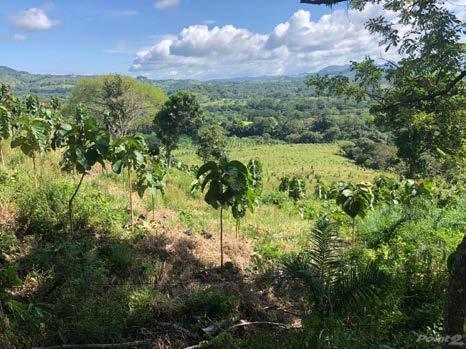
For Ticos, the term "pura vida" is an expression of happiness, optimism, and living life to the fullest. It is impossible to visit Costa Rica without hearing this phrase continuously.
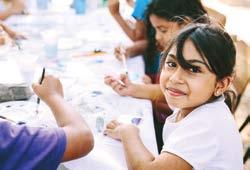
1. Another Flat Tire?
2. Swedish Massage
3. Spanish: Looking for Adventure
4. Victory for the Whales in Iceland
Other popular articles:
• A Rescue Quest
• Diabetes #5 Killer
• Sailing into Harm's Way
• Pickleball Sweeps Costa Rica
• Gringo Gardners in Costa Rica
• Our New War Against Whaling
• Vasomotor Rhinitis
• Tico Expressions
• Assisting the Locals Understand Expats
• The Expat Dementia Dilemma in Costa Rica
• Aquatic ApesLiving a Biocentric Life
• Spanish: Real Estate Terms
• Peptic Ulcer Disease Solutions to the 28 Cons
• Health Tips for Hot Tub Enjoyment
• Fiercely Feminine
• Wisdom from Albert Einstein
• Costa Rica Takes Top Recognition in Coffee International Challenge
See all Pura Vida articles which are translatable into 12 different languages, top 4:
Swedish massage is one of the most popular types of massage therapy found around the world. It is a holistic form of bodywork that focuses on enhancing the relaxation of the entire body. Swedish massage is a gentle and rhythmic type of massage therapy that is designed to release tension in muscles and promote relaxation. It is a great form of massage therapy to receive if you are looking for stress relief, relaxation, or relief from muscle pain.
One of the most immediate benefits of Swedish massage is its ability to promote deep relaxation, both mentally and physically. Swedish
massage works by manipulating soft tissues, such as muscles, fascia, and tendons to release tension and promote relaxation. This type of massage therapy can help to reduce levels of the stress hormone cortisol in the body, thereby helping to improve moods and overall sense of well-being.
Another benefit of Swedish massage is its ability to improve circulation. As massage therapists use kneading, rubbing, and tapping techniques on the body, the flow of blood and oxygen is increased. This increase in circulation helps to nourish and oxygenate the body's tissues and organs, which can lead to improved overall health.

Finally, we should also note that Swedish massage can be used to treat certain physical conditions such as muscle pain, stiffness, and muscle knots. Swedish massage can help to reduce muscle tension and stiffness, thus allowing for an increased range of motion and flexibility. This makes it an ideal treatment for people who suffer from chronic pain, as well as athletes who are looking to improve their performance or recover from an injury.
Book an appointment today and start feeling the benefits!
In summary, the Swedish massage is a brilliant form of massage therapy that offers a range of benefits. It promotes relaxation, improves circulation, and promotes healing from muscle pain and stiffness. If you're looking for a holistic way to relieve tension and reduce stress, Swedish massage might be the perfect fit for you.

If you've never tried Swedish massage before, it is worth exploring, as it is one of the most widely known and well-respected forms of massage therapy.




The decision to end whaling in Iceland came about because of the incredible efforts by so many people for so many years. Many organizations in Iceland and around the world have contributed to this special day.
The efforts of Sea Shepherd UK over the years have provided a constant opposition. SS UK volunteers have kept the pressure on Kristjan Loftsson on the ground at his whale meat processing plant, where every single crime Loftsson has committed since 2018 has been documented. A big thank you to Rob Read and his crew. Everyone on the shore crew did an amazing job with intel, reconnaissance and documentation.
Sea Shepherd Iceland, now using the name Sjávarhirðir, has also been working on the ground in Iceland in support of both Sea Shepherd UK and the Captain Paul Watson Foundation. Sea Shepherd France and Sea Shepherd Brazil also contributed greatly to the success of the campaign.
Unfortunately, Sea Shepherd Conservation Society (SSCS) and Sea Shepherd Global were opposed to this campaign.
Much appreciation to the Icelandic Food and Veterinary Authority (MAST) for its excellent report demonstrating how inhumane the whaling is. Much appreciation also goes to Icelandic Minister for Agriculture and Fisheries, Svandís Svavarsdóttir, for making the politically courageous decision to deny permits to Kristjan Loftsson to kill whales this season.
Most importantly, the campaign would not have been possible without the support of John Paul DeJoria’s Peace, Love & Happiness Foundation.
The crew with the Captain Paul Watson Foundation onboard the John Paul DeJoria made the final push. The Minister announced the ban on whaling just hours after the John Paul DeJoria arrived in Icelandic waters.
The last thing the government of Iceland needed was a major confrontation in their waters over the controversy of illegal whaling.
A trial would have been the opportunity to expose Loftsson’s crimes to the world.
Our reputation preceded us, and if Loftsson was permitted to go whaling, it would have put us on a collision course with the Icelandic Coast Guard — a confrontation that the Icelandic Coast Guard could not win even if they managed to seize the ship. That’s because win or lose, it would put Iceland on trial over the fact that Loftsson’s whaling ships are a violation of the International Whaling Commission’s global moratorium on whaling.
Based on our reputation, Iceland understood that we were prepared to put our ships, our lives and our freedom on the line. If arrested, we would make the arrest political, and a trial would have been the opportunity to expose Loftsson’s crimes to the world.
The John Paul DeJoria will remain on station in Icelandic waters for a few more days to assess the situation. If the ban holds, the crew will be only a few days away should Kristján Loftsson decide to defy his government.



This is a great victory for endangered fin whales, for marine conservation and for our planet.
For the rest of the story, click here
The Hvalur 9 today dockside in Reykjavik. The crew are gone and the harpoon gun has been covered. Both the Hvalur 9 and the Hvalur 8 have been grounded for the duration of the summer.balsa — raft
bosque — forest
bote — boat
bucear — scuba diving
cabalgata — horseback ride
caminata — hike
canopy — ziplining
catarata — waterfall
centro de rescate animal —
animal rescue center
ciclismo — cycling
cuadraciclo — all-terrain vehicle (ATV)
paracaidismo — sky-diving
pesca — fishing
puentes colgantes — hanging bridges
puesta del sol — sunset
rafting — rafting
remar — to paddle
remo — a paddle
snorkeling — snorkeling
termales — hot springs
velero — sailboat
ver pajaros — bird-watching
volcán — volcano
Click here for more Spanish learning


Isaw a cartoon recently with this caption: "Why does my car have to be inspected to ensure it’s good enough for use on the roads, when the roads look like this?" The picture depicted some typical Costa Rica roads, marred with rocks, holes and debris.
If you've been here at any time at all, there’s a good chance you've walked out to go somewhere and you were greeted with a flat tire. Sometimes it only needs a quick fix; other times, perhaps a new tire has to be purchased, depending on the situation.
One thing is for sure — if you experience a flat tire while driving on the road, some people will insist, "Stop right there or you'll ruin the tire!" But if "right there" is in the middle of traffic, you create a whole new situation to contend with. So instead, it’s best to drive slowly — with your hazard lights on — to the next good, level place to pull over and safely change your tire.
Some local repair shops claim that drywall screws are

The six top causes of flat tires are:
1. Sharp objects
2. Bad road conditions
3. Wear and tear
4. Valve stem leakage

5. Improper inflation
6. Heat
And here are four ways to try to avoid this nuisance of a situation:
1. Check your tire pressure yourself, at least monthly, using a reliable tire gauge.
2. Slow down more if possible on bad roads with rocks and holes or craters.
3. Check for tire wear and tear and invest in new ones to ensure your safety.
4. Put magnets on the front bumper to collect any metal objects like drywall screws.
Ok ... “4” is a joke.
Yet, some local repair shops claim that drywall screws are the No.1 cause of tire damage. We know this from personal experience. An item that costs literally a few colones (cents) can cause vehicle damage or even a wreck — all starting with a flat tire.
In an attempt to inject a little humor in this sometimes weekly or monthly life episode, here's a little “drywall screw conspiracy” poem:
The screw has fallen on the road ahead
How it got there, really can't be said.
Is it a subject of intent to promote the repair shop?
Why is it not on the side or ditch, but on the top?
With all of the miles I travel and the cautions I take
That screw will find its way, make no mistake.
I'm usually in a hurry and have to go
When my tire is flat and it clearly shows.
So I do the labor or pay an amigo crew
The problem was caused by that dang little screw.
are the No.1 cause of tire damage.

During the COVID-19 pandemic, people sought refuge in secluded and secure locations. The pandemic prompted individuals and families to reassess their lifestyles and prioritize their quality of life.
The desire for safe and secure locations, the rise of remote work, and attractive investment opportunities have driven the demand for luxury properties. Costa Rica has had a hot and trending luxury real estate market during and after the pandemic, but why?
Costa Rica is known for its natural beauty — housing 5% of the world's biodiversity — as well as its welcoming environment, and stable economy and politics. Not surprisingly, the country has experienced a surge in demand for luxury real estate since the pandemic began.
Most luxury properties in Costa Rica feature eco-friendly designs, expansive outdoor spaces, and access to nature. They offer a desirable living experience and, at the same time, cater to remote professionals by offering home office spaces, high-speed internet connectivity, modern amenities, time zone compatibility with major cities, and an excellent standard of living. Costa Rica approved favorable legislation to attract digital nomads and tax benefits for people who apply for CR residency as annuitants (fixed income), investors, or retirees (lifetime pension).
by Ivan GranadosCosta Rica's long-standing political stability, with no army since 1949, along with a robust economy and attractive investment climate, have made it a favored destination for real estate investments.
Costa Rica has been considered for many years as the country with the world’s highest happiness ranking, according to the Happy Planet Index, and has devoted substantial resources to investment in health and education.
Luxury properties in Costa Rica offer the potential for capital appreciation and rental income, making them an appealing investment option.
Costa Rica's pura vida lifestyle emphasizes and aligns with the growing focus on a sustainable and healthy lifestyle, well-being and opportunities for outdoor activities to contribute to a harmonious blend of work and leisure.
High-net-worth (HNW) and ultra-highnet-worth (UHNW) individuals seek a new future for their families in a secure, convenient and beautiful destination. They have increased their interest in owning a luxury property in Costa Rica, either already built or on estate lots to build their bespoke luxury homes. The luxury niche is generally less affected by uncertainty.
Our firm, GM Attorneys at Law, has provided boutique and premier legal services in Costa Rica since 1978. We focus on attending to the needs of our clients in an integral and personalized manner while promptly and effectively satisfying all their legal requirements. Our mission is to become another one of your business allies by offering the best legal advice with the highest ethical and professional quality standards.
In 2023 we are celebrating two significant milestones and achievements: our 45th anniversary since inception in San José and the 20th anniversary of our opening in Guanacaste. Our four offices, one in San José and three in Guanacaste — Flamingo, Tamarindo and Nosara — allow us prompt and direct responses to our client's legal needs, prioritizing a comprehensive analysis of each situation.
From our Guanacaste offices, we provide practical and expert legal advice on the due diligence and the conveyancing process for clients that have already purchased or will purchase in high-end resorts. These include Andaz Residences, Four Seasons Private Residences, and Nekajui — a RitzCarlton Reserve Residence — at Peninsula Papagayo; as well as in Hacienda Pinilla; Reserva Conchal; Las Catalinas; Zapotal, a Discovery Land development; Waldorf Astoria Private Residences; and Nosara.
We at GM Attorneys will be pleased to help you with your legal matters in Costa Rica! Please feel free to contact us at info@ gmattorneyscr.com or visit our blog section at https://www.gmattorneyscr.com/gm_ website/html/blog.php



• New Obligations for Inactive Corporations
• Options for Real Estate Subdivision in Costa Rica
• New Capital Gains Tax in Costa Rica
• Corporation Basics: Benefits and Obligations
• Costa Rica Residency
• Home Luxury Tax 2022
• FAQs for Expats
• Mandatory Registration of Rental Properties for Non-Traditional Tourist Accommodations
As the world becomes increasingly reliant on information technology, it’s essential to ensure that cybersecurity is given adequate attention. Costa Rica, a small but quickly growing country, must take action to minimize the risks of digital attacks.
With more and more businesses and individuals relying on technology for their day-to-day activities, cybersecurity has never been more important.

The rise of online banking and electronic payments, for example, brings particular dangers which require robust security measures.
In recent years, the country has had several high-profile cyberattacks
— a reminder that as Costa Rica continues to develop and expand its technological infrastructure, security measures must be put in place to protect against malicious actors. This includes not just preventative measures, but also more intensive monitoring and evaluation of existing security systems.
Additionally, the government plays an important role in safeguarding the nation’s digital security. In response to the increase in cyberattacks, there have been a number of important steps taken such as the creation of the National Cybersecurity Strategy
in 2020. This initiative aims to promote coordination and cooperation between different organizations and institutions in the country, in order to prevent and respond to cybersecurity incidents.
By increasing public awareness, improving internal controls, increasing cybersecurity resilience, and enhancing the legislative framework, this strategy will go a long way in reducing the country’s overall risk.
It is vital for Costa Rica to make ongoing investments in its cybersecurity infrastructure to keep up with emerging threats, and

to ensure that both individuals and organizations have access to the resources and training necessary to protect themselves online.
Through public awareness campaigns, private collaborations, and government initiatives, Costa Rica can build a strong foundation for safe and secure digital connections. It’s important to remember that as people increasingly move online, the risks and threats to cybersecurity continue to evolve, and so it is up to all individuals and stakeholders to be vigilant in the digital space.
In recent years, the country has had several high-profile cyberattacks.


We never slowed down during Covid. Since the printing presses were closed down, we discontinued that media and improved our digital online presence:
January 1, 2023 to June 28, 2023: 2,998,069 pageviews
June 2022-June 2023: 6,194,207 Pageviews Click
• Reader's Choice — your submitted content of
• Costa Rican-owned restaurants
• From the Kitchen — traditional Costa Rican recipes
• Expat recipes — from Facebook groups using local ingredients
• Advertising partners
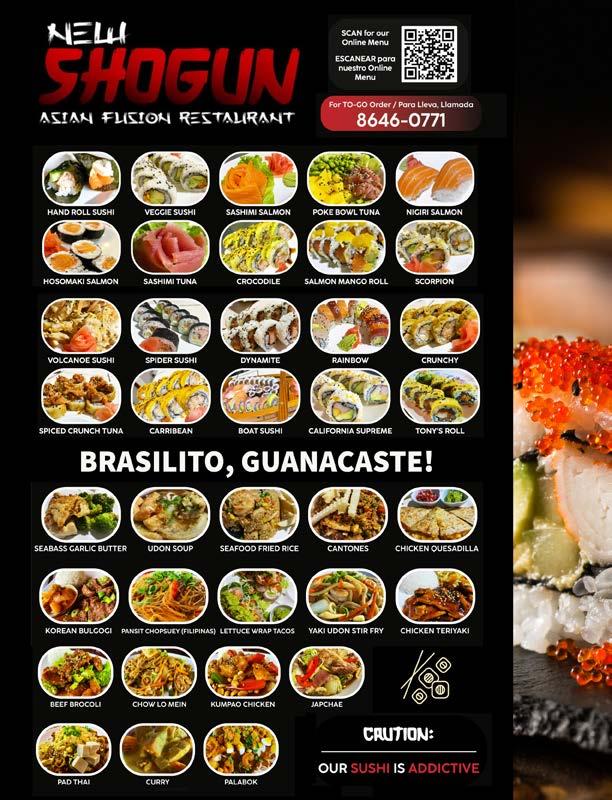

Papayas are a key ingredient in many traditional Costa Rican dishes.

Costa Rica is famous for many things, including its beautiful beaches, exotic wildlife and delicious tropical fruits. One fruit which is particularly popular in this Central American country is the papaya. This sweet and succulent fruit is grown throughout the country and plays a vital role in Costa Rican cuisine and culture.
Papaya plants, also known by the scientific name Carica papaya, are native to the tropics of the Americas, and were first cultivated by indigenous peoples thousands of years ago. Today, Costa Rica is one of the world's largest producers of papayas, with the fruit being grown on farms and plantations across the country. The warm, humid climate of the country's coastal regions is ideal for growing papayas, which require plenty of sunlight and water to thrive.
The papaya plant is a small, fast-growing tree that can reach heights of up to 30 feet. Its leaves are large and deeply lobed, while its flowers are small and yellow or pink in color. The fruit itself is oval-shaped, with a green or yellow exterior and a sweet, orange flesh inside. The seeds of the papaya are also edible, and are often used to make a spicy condiment called aji de papaya.
Papayas are a key ingredient in many traditional Costa Rican dishes, including ceviche, ensalada rusa and casados. They are also a popular snack, and can be eaten fresh or dried, or made into jams and jellies.
The fruit is thought to have many superfood health benefits, including aiding digestion, boosting the immune system and reducing inflammation.
Despite the popularity of the papaya plant in Costa Rica, there have been challenges to its cultivation in recent years. In particular, the country has seen outbreaks of a disease called papaya ringspot virus, which can devastate papaya crops. However, farmers and scientists are working hard to find ways to combat this disease and keep the papaya industry thriving for many years to come.
Roasted Papaya
by Carolyn MooreheadIngredients
2 tablespoons light-brown sugar
1/4 teaspoon ground ginger
2 medium Solo papayas (14 ounces each), halved lengthwise and seeded
1/4 teaspoon cayenne pepper
1 lime, cut into 4 wedges
Directions
Preheat oven and combine sugar and ginger: Preheat oven to 450°F. Stir together sugar and ginger in a small bowl. Prepare papaya halves: Arrange papaya halves, cut sides up, in a 10-by-13-inch baking dish. Sprinkle sugar mixture evenly over halves.
Bake the papaya, brushing the edges with melted sugar mixture (it will collect in well of fruit) 2 or 3 times, until mixture is bubbling and papaya edges are beginning to darken, 35 to 40 minutes.
One of the things that still fascinates me about Costa Rica is seeing row upon row full of tuna cans on the shelves of every supermarket.
 by Terry Carlile
by Terry Carlile
Canned tuna is a popular food item in Costa Rica because it is easy to prepare, affordable, and widely available. Canned tuna has a long shelf life and can be found in most grocery stores throughout the country. For many Costa Ricans, canned tuna is a go-to ingredient for quick meals and snacks.
One reason for the popularity of canned tuna in Costa Rica is its versatility. Canned tuna can be used in a variety of dishes, from sandwiches to salads to pastas. It can also be used as a topping for rice and beans, which is a staple dish in Costa Rican cuisine. Because of its versatility, canned tuna can be used to create many different types of meals, making it a convenient and practical option for busy households.
Another factor that contributes to the popularity of canned tuna in Costa Rica is its affordability. Unlike fresh fish and other types of seafood, canned tuna is lowcost and accessible to almost everyone. This means that even families on a tight budget can enjoy the benefits of seafood in their diets. For many Costa Ricans, canned tuna is an affordable and practical way to incorporate healthier protein into their meals.

Lastly, canned tuna is a popular food item in Costa Rica because it is a good source of protein. As a high-protein food, canned tuna is an excellent option for people looking to build or maintain muscle mass. It is also a nutritious option for children who need to grow and develop. By including canned tuna in their diets, Costa Ricans can ensure that they are getting the nutrients they need to stay healthy and strong.
Canned tuna’s popularity in Costa Rica is hardly surprising, as a convenient, affordable and versatile food choice. It is a staple ingredient in many Costa Rican households and is enjoyed by people of all ages. Whether used in salads, sandwiches, or main dishes, canned tuna is a nutritious and practical option for those looking to incorporate more seafood into their diets.
For many Costa Ricans, canned tuna is a go-to ingredient for quick meals and snacks.
My mother made a tuna fish salad that I always loved. In her recipe, she used eggs, mayonnaise, sweet gherkin pickles, and the juice from these pickles. Sometimes she would cut up some sweet Red Delicious apples in place of the gherkin pickles. These ingredients and the way she made it have served as general guidelines for my making of tuna fish salad, as I have adapted to the available ingredients in Costa Rica.
Below, I give the easy instructions on how to make this quick meal, including the nutritional value, serving suggestions with photos and some variations that I sometimes enjoy. Please note that this recipe uses canned tuna in water, but you can choose canned tuna in light oil, if you wish. Even better would be to have cooked fresh tuna if it is available!
Cook Time
Prep time: 15 min
Ready in: 15 min
Yields: 5 servings (five sandwiches)
by Randy McLaughlinIngredients for Easy Tuna Salad
* 2 cans tuna fish chunks, 6-ounce cans, drained
* 4 eggs, medium, hard-boiled
* 3/4 cup mango, ripe, chopped fine
* 2 tablespoons onion, white or yellow, chopped fine
* 2 tablespoons Salsa Lizano, (or Salsa Inglesa)
* 1 tablespoon Tapa de Dulce (cane syrup), (or you can substitute honey)
* 1/2 cup Sandwich spread, (Hellman's or equivalent)
* 2 tablespoons cilantro leaves, chopped fine
Instructions
1. Boil the 4 eggs for five minutes so they are hard-boiled. Then take them out and place in a pot of cool water.
2. While the eggs are cooling, cut up the mango and the onion.
3. Remove the shells from the hard-boiled eggs and chop them up into fine pieces into a bowl. Add all of the remaining ingredients and mix.
4. Place the tuna salad in the refrigerator for 30 minutes or so before serving to let the flavors mingle.
Click here for Randy's serving suggestions and more.

Costa Rican tuna fish salad, otherwise known as atun con sodas is one of the most popular foods among Costa Ricans. And I can tell you from lots of experience that there are few better places in the world to enjoy tuna.
There are several reasons for this. The first is that the canned tuna lasts practically forever in any type of climate, making it an easy food to have on hand.
The second reason is that it’s easy to travel with tuna and crackers, making a quick snack or meal on the go.

The third reason is that it’s relatively cheap to buy and it’s sold everywhere. If you find yourself hungry and in need of a highprotein snack, it’s almost guaranteed the closest grocery store or pulperia has tuna on hand.
Because the tuna is caught fresh, it's quickly packaged as the canned tuna we see on our shopping shelves.

There is canned tuna in oil, in water, with mixed vegetables, and even with jalapeno.
For the longest time, Costa Ricans would have to use a knife to open the can because can openers were not readily available. They would stick a large knife into the metal top or bottom, and then pry as much of the top off as necessary to get the tuna out.
Today, the easy-open cans make opening and enjoying tuna much more practical. Tuna salad is now a popular food for at the beach, a quick dinner, or even a snack on the road.


Coffee is a popular drink that is enjoyed by millions of people all over the world. It is the most widely consumed beverage after water, and is considered to be an important part of the daily routine for many individuals. Apart from its rich aroma and delicious taste, coffee has many health benefits that are not all widely known.
In fact, surprising or not, thousands of scientific studies have earned coffee bragging rights as a superfood, in the same league as berries, dark leafy greens, and other nutrient-dense foods. Here, we’ll explore some of the reasons why.
One of the main health benefits of coffee is that it contains antioxidants. Antioxidants are substances that protect the body from free radicals, which are harmful substances that can cause damage to cells and tissues. Coffee contains a high amount of antioxidants that help to reduce the risk of chronic diseases such as cancer, heart disease, and diabetes.
Another important health benefit of coffee is that it can boost your energy levels. This is because coffee contains caffeine, a natural stimulant that can increase alertness and improve cognitive function. Caffeine works by blocking the neurotransmitter adenosine, which makes you feel tired. As a result, drinking coffee can help you stay awake, focused, and alert.
Coffee has also been found to be beneficial for the liver. Studies have shown that coffee can help reduce the risk of liver diseases such as liver cancer, cirrhosis and fibrosis. This is because coffee contains compounds that have anti-inflammatory and anti-fibrotic properties, which help to protect the liver from damage and aid in the healing process.
In addition to its other benefits, coffee has also been linked to a reduced risk of depression. Studies have shown that people who consume coffee regularly are less likely to develop depression and other mental health disorders.

 by Terry
by Terry


offee, a common beverage choice, particularly in the morning, has become a staple in many people's daily routines. However, as much as coffee may be the perfect pick-me-up when your're feeling sluggish, it also carries health risks that must not be ignored. Overconsumption of coffee can lead to negative effects on our health, which warrant careful consideration alongside the proven health benefits.
Here, we will explore some of the potential health problems associated with coffee, showing the importance of drinking it in moderation.
The first health risk of coffee is the direct effect it has on the nervous system. The caffeine in coffee is a psychoactive drug, acting on the central nervous system, leading to increased signals in the brain, leading to the stimulation of the nervous system. This stimulation could lead to feelings of anxiety, nervousness, and irritability, leading to indisposition and poor mental health.
According to the American Psychiatric Association, anxiety, and panic disorders have been linked to excessive caffeine intake. This shows the dangers of coffee on the human nervous system.
Secondly, coffee is notorious for its effect on the digestive system. Long-term coffee consumption could lead to over 30 various gastrointestinal conditions. One of these conditions is Gastroesophageal Reflux Disease (GERD), a long-term condition that could lead to other health risks. GERD is caused by the relaxation of the lower esophageal sphincter, leading to the reflux of the stomach's contents. Acidic coffee contents could have a significant impact, leading to severe symptoms such as chest pain, heartburn, and indigestion.
Another significant health hazard of coffee consumption concerns bone health. Calcium balance in the body is essential for maintaining sturdy bones. Excessive caffeine intake can interfere with calcium uptake, leading to a loss of bone density. This condition is known as osteoporosis, characterized by bones becoming brittle and fragile, leading to an increased risk of fractures.
 by John Quam
by John Quam
The mojito, a classic Cuban cocktail, is a refreshing and flavorful drink that has become a popular choice for parties and social gatherings. With its combination of sweet, sour and minty flavors, the mojito is a perfect choice for warm weather or any occasion that calls for a refreshing cocktail. But, making a truly great mojito requires a bit of know-how and attention to detail.
In this article, we will provide you with tips and tricks for making the best mojito you have ever tasted. Whether you are a seasoned bartender or a home mixologist, this guide will provide you with all the information you need to make the perfect mojito every time.
The mojito is a classic cocktail that originated in Cuba. It was a popular drink among the working class, especially among sugar cane workers, in the late 19th century. The traditional mojito recipe consists of five basic ingredients: rum, sugar, lime juice, mint and soda water. The drink was initially called "El Draque" after Sir Francis Drake, a British privateer who invaded Cuba in the late 16th century. Over time, the drink evolved into what we know now as the mojito.
Over the years, mixologists have come up with various twists on the traditional mojito recipe. Some of the popular variations include:
• Strawberry mojito: This fruity version of the mojito includes muddled strawberries along with the traditional ingredients.
• Pineapple mojito: Pineapple juice is added to the traditional recipe to give it a tropical twist.
• Coconut mojito: This version of the mojito includes coconut cream along with the classic ingredients.
• Blueberry mojito: Muddled blueberries are added to the traditional recipe to add a sweet and tangy flavor.

The key to a great mojito is using fresh ingredients. Make sure you use fresh mint leaves, freshly squeezed lime juice and highquality rum.
The best mint leaves for mojito are fresh and fragrant. Look for leaves that are bright green, without any signs of wilting or browning.
When making a mojito, it's best to use fresh limes that are ripe and juicy. Look for limes that are heavy for their size and have glossy skin.
The two most commonly used sugars in a mojito are granulated sugar and simple syrup. While granulated sugar is traditional, simple syrup is easier to dissolve and blend into the cocktail.
CLICK FOR MORE:



